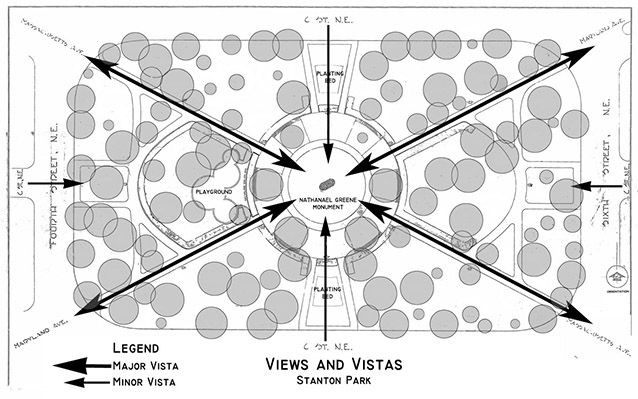Stanton Park is a designed cultural landscape located in northeast Washington, D.C., between 6th Street NE to the east and 4th Street NE to the west. The park was created as part of the implementation of the L'Enfant Plan for the City of Washington, and it has been a public park since the first improvements to the area in the 1870s.
"The situation of these Squares is such that they are the most advantageously and reciprocally seen from each other..." Pierre L'Enfant, in HABS DC-686, 1993

NPS/Jack Boucher for HABS, 1993
In 1791, the District Commissioners acquired undeveloped land that is now Stanton Park as part of the right-of-way for the city's street and avenue system. The area was not fenced off as a public park until 1867, and in 1871 it became known as Stanton Square after Abraham Lincoln's Secretary of War, Edwin Stanton.
Soon after, Congress authorized a statue of Revolutionary general Nathanael Greene, which was erected in the park in 1878. The park featured formal flower beds among winding paths. After a 1933 redesign, the landscape was altered to reinforce the central focal point of the park, with formal walkways and a more sparsely planted landscape.

NPS (NCR Division of Lands, Resources and Planning, Reservation File 15)
There is partial integrity to the two earlier periods of significances: 1791, when the land was first set aside as a public reservation, and 1867-1877, when the Greene statue was placed in the center of the park and linden trees were planted around the perimeter of the park.

NPS
Quick Facts
- Cultural Landscape Type: Designed
- National Register Significance Level: National
- National Register Significance Criteria: A, C
- Periods of Significance: 1791; 1867-1933
Landscape Links
Last updated: October 8, 2021
